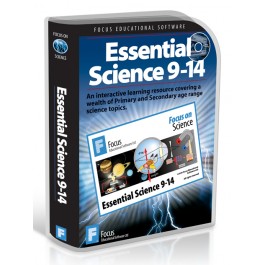Physics Animations For Class 11 Free Download
» Physics Tutorial The Physics Classroom Topics The motion of objects in one-dimension are described using word, diagrams, numbers, graphs, and equations. Newton's three laws of motion are explained and their application to the analysis of the motion of objects in one dimension is discussed. Vector principles and operations are introduced and combined with kinematic principles and Newton's laws to describe, explain and analyze the motion of objects in two dimensions. Applications include riverboat problems, projectiles, inclined planes, and static equilibrium. The impulse-momentum change theorem and the law of conservation of momentum are introduced, explained and applied to the analysis of collisions of objects. Concepts of work, kinetic energy and potential energy are discussed; these concepts are combined with the work-energy theorem to provide a convenient means of analyzing an object or system of objects moving between an initial and final state. Newton's laws of motion and kinematic principles are applied to describe and explain the motion of objects moving in circles; specific applications are made to roller coasters and athletics.
Visually appealing interface with bright colors and child attracting animations that helps your child learn. Petes powerpoint station is your destination for free powerpoint presentations for kids and teachers about physics, and so much more. Physics animations for class 11 free download.

Newton's Universal Law of Gravitation is then presented and utilized to explain the circular and elliptical motion of planets and satellites. The distinction between heat and temperature is thoroughly explained. Methods of heat transfer are explained. The mathematics associated with temperature changes and phase changes is discussed; its application to the science of calorimetry is presented. Basic principles of electrostatics are introduced in order to explain how objects become charged and to describe the effect of those charges on other objects in the neighboring surroundings. Europa Universalis 3 Complete Patch ITALY. Charging methods, electric field lines and the importance of lightning rods on homes are among the topics discussed in this unit.
The flow of charge through electric circuits is discussed in detail. The variables which cause and hinder the rate of charge flow are explained and the mathematical application of electrical principles to series, parallel and combination circuits is presented. The nature, properties and behaviors of waves are discussed and illustrated; the unique nature of a standing wave is introduced and explained.
The nature of sound as a longitudinal, mechanical pressure wave is explained and the properties of sound are discussed. Wave principles of resonance and standing waves are applied in an effort to analyze the physics of musical instruments. The behavior of light waves is introduced and discussed; polarization, color, diffraction and interference are introduced as supporting evidence of the wave nature of light. Color perception is discussed in detail.
The ray nature of light is used to explain how light reflects off of planar and curved surfaces to produce both real and virtual images; the nature of the images produced by plane mirrors, concave mirrors, and convex mirrors is thoroughly illustrated. The ray nature of light is used to explain how light refracts at planar and curved surfaces; Snell's law and refraction principles are used to explain a variety of real-world phenomena; refraction principles are combined with ray diagrams to explain why lenses produce images of objects.
Embed an image that will launch the simulation when clicked Click to Run Use this HTML code to display a screenshot with the words 'Click to Run'. • Gas • Heat • Thermodynamics. Topics • Gas • Heat • Thermodynamics • Gravity • Pressure • Ideal Gas Law • Boyle's Law • Charles' Law Description Pump gas molecules to a box and see what happens as you change the volume, add or remove heat, change gravity, and more. Measure the temperature and pressure, and discover how the properties of the gas vary in relation to each other. Sample Learning Goals • Predict how changing a variable among PVT, and number influences other gas properties. • Predict how changing temperature will affect the speed of molecules. • Rank the speed of molecules in thermal equilibrium based on the relative masses of molecules.
Misfits Season 1 Ost Download. Version 3.15.
Posts
- Yamaha Mm6 Midi Files Download
- Pilote Olitec Clé Usb Nano Wifi N
- Eric Clapton Unplugged 320 Rapidshare Download
- Winning Eleven 2000 Psx Iso
- Windows Xp 64 Bit Iso Скачать С Торрента
- Stackridge Something For The Weekend Rare
- Dvdfab Mac Serial Key
- Free Fonts Download For Coreldraw X3
- Blackhat Cpa Software Company